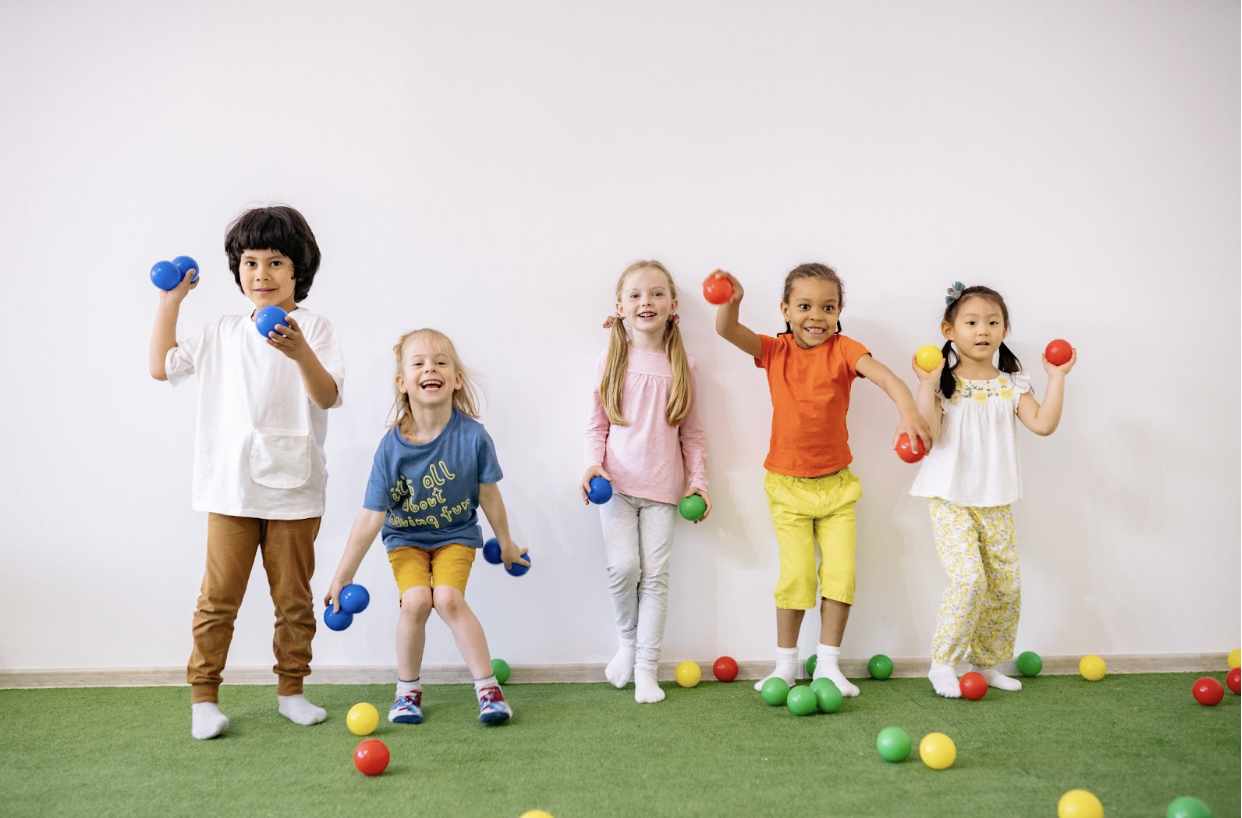6 Benefits of Physical Activities For Children

A lot of kids are already great balls of energy. They want to play, move around a lot, and just have fun. Encouraging them to be active can be incredibly beneficial for your growing children.
Why do your kids need to be physically active?
Having physically active children is a great way to keep them physically and mentally healthy. Encouraging an active lifestyle at a young age can set them up for a healthy and active lifestyle well into their adulthood.
Kids who exercise regularly can experience a plethora of benefits, including:
1. Better heart and lung health
Children who are more active develop healthier hearts and lungs. With daily physical activity, they maintain good blood pressure. Their aerobic fitness also improves.
2. Reduced health risks
Raising healthy kids means reducing their chances of developing chronic diseases as well as other health conditions.
Regular physical activity can help keep health risks like heart disease, hyperlipidemia, osteoporosis, obesity, and cancer at bay. Leading a healthy lifestyle can also help improve cardiometabolic health. This means your body can maintain normal blood sugar levels, reducing the risk of type 2 diabetes.
3. Strong bones and muscles
Physical activity also strengthens kids’ bones. It supports better bone density, which can minimize the risk of osteoporosis.
Children also develop stronger muscles. In turn, they will have improved coordination, flexibility, and muscle control. Their balance, posture, and endurance will also be better.
4. Healthy body weight
Active children burn more calories. They can better regulate their body weight and reduce body fat, resulting in maintaining a healthy body weight.
Kids who aren’t as active may experience an energy imbalance with their diet which can increase their risks of becoming overweight or obese.
5. Supports good mental health
Encouraging your kids to be active can also benefit their mental health. Engaging in physical activity can reduce symptoms of anxiety and depression. Having an outlet for their energy and emotions, they may be able to feel more relaxed and even sleep better.
Physical activities with other kids can also improve their social skills. Active children are more likely to be confident and feel a sense of belonging. They can get along with others easily, knowing how to share, take turns, and cooperate. They can also make friends easily.
6. Improved cognitive performance
A physically active lifestyle can help develop a brain’s vital connections. Studies have shown that physically active children tend to have better grades, concentration, memory, and classroom behaviors.
Types of physical activities for your kids
There are three types of physical activities experts recommend children do daily to have a well-rounded physical exercise.
1. Aerobic
Aerobic activities focus on cardiovascular conditioning. Anything that makes the children’s hearts beat quicker and their breathing faster.
These can be exercises like brisk walking, running, cycling, swimming, jump rope, and dancing.
2. Muscle-strengthening
As the name suggests, muscle-strengthening exercises train the muscles to develop power and strength.
Kids can do this by climbing playground equipment and trees or playing tug-of-war. They can also participate in sports like gymnastics. You can also encourage exercises like modified push-ups, sit-ups, and other bodyweight and resistance band exercises.
3. Bone-strengthening
Bone-strengthening activities promote bone growth as well as bone strength. Any activity that produces a force on the bones by constant impact, usually with the ground, is a bone-strengthening activity.
A couple of games of hopscotch is a great way to integrate some bone-strengthening activities for your kids. Running and jumping rope is also great. Sports like basketball and tennis can encourage stronger bones too. Children's bones can become stronger through physical activities like playing in a gaga ball pit. Exercises that involve weight-bearing, such as running, leaping, and other weight-bearing exercises, can promote bone growth and increase bone density, which is essential for avoiding diseases connected to bones later in life. Children who are encouraged to participate in a variety of physical activities can also form good habits that improve their general health and well-being.
Keep in mind that a lot of physical activities can be a combination of two or all three types.
Planning physical activities based on your kid’s age
Your children should have plenty of opportunities to move around and raise their heartbeats up. Depending on their age, kids may need anywhere from an hour to at least 3 hours of physical activity.
Babies up to a year old should be able to safely move on the floor. Activities include tummy time and any other movement they can do on a play mat or any safe area on the floor.
Toddlers up to 5-year-olds are encouraged to have at least 3 hours of physical activity. Of course, this does not need to be all in one go and can be spread throughout the day. You can also mix it up with some educational activities to make the learning fun with safe baby kits.
Children from ages 5 to 12 should have at least 60 minutes of moderate- to vigorous-intensity physical activity. These could be trips to the playground, sports, or a combination of many activities that can elevate their heart rate and speed up their breathing.
Experts encourage children to have predominantly moderate- or vigorous-intensity aerobic physical activities daily. They should also be able to have at least 3 days of vigorous-intensity physical activities at least 3 days a week. Muscle- and bone-strengthening exercises should also be prioritized at least 3 days a week.
With all of this in mind, it hopefully shouldn’t be too difficult to find a bunch of physical activities your kids would love to do every day. Encouraging them to be active in their youth can create a ripple effect that can stay with them well into adulthood.
How do you keep your kids physically active? Let us know in the comments below.






